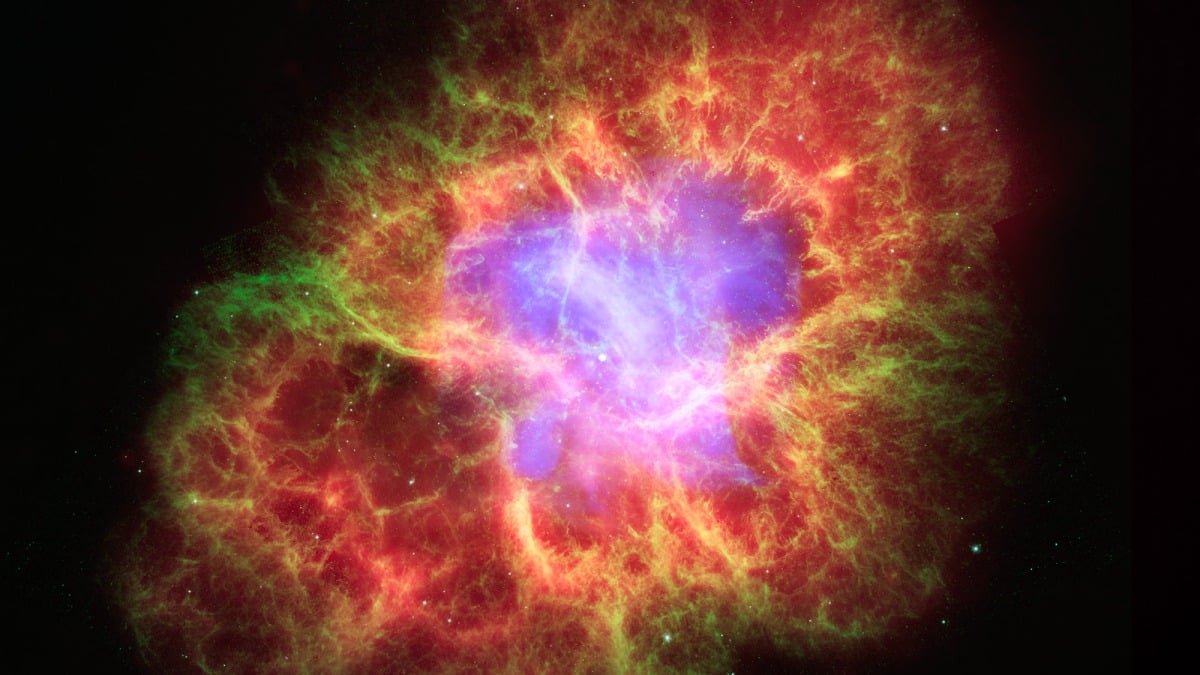Entertainment
Colossal space explosion is the most powerful humans have ever seen

Astronomers knew the space explosion last fall was huge.
A blast mighty enough to overload many cosmic explosion detection instruments is certainly something our satellites and telescopes don’t see every year. “It’s a very unique event,” Yvette Cendes, an astronomer and postdoctoral fellow at the Harvard-Smithsonian Center for Astrophysics(Opens in a new tab), told Mashable in October 2022. Now, with months of follow-up research, astronomers have concluded that such bright light (or radiation) from this gamma-ray burst — the most powerful known type of explosion in the cosmos, and strong enough to create a black hole — likely hasn’t arrived at Earth in thousands of years.
“GRB 221009A was likely the brightest burst at X-ray and gamma-ray energies to occur since human civilization had began,” Eric Burns, an assistant professor of physics and astronomy at Louisiana State University who worked on the new research, said in a NASA statement(Opens in a new tab).
In the latest batch of research, published(Opens in a new tab) this week in The Astrophysical Journal Letters, scientists scrutinized around 7,000 detected gamma-ray bursts to deduce the odds of seeing such a fantastically bright event. The answer: We’ll likely only observe such a gamma-ray burst once in every 10,000 years.
So this was extremely bright. Some dub GRB 221009A as the “BOAT” — the “brightest of all time.” But, as with other distant space explosions, you need not worry. Yes, radiation from the blast passed through our solar system and allowed us to detect an event that happened 1.9 billion light-years away (meaning it took 1.9 billion years to arrive here). But this radiation has been spreading through space for eons, and it is so faint that sensitive instruments like NASA‘s Fermi Gamma-ray Space Telescope are required to even pick up these signals. We’re watching, but we’re unaffected by the light.
“It’s the equivalent of getting front row seats at a fireworks show,” Cendes told Mashable last year.
Tweet may have been deleted
(opens in a new tab)
(Opens in a new tab)
What caused this giant space explosion?
The gamma-ray burst GRB 221009A trumped such previous explosions. Most instruments designed to detect this type of light couldn’t handle the anomalously extreme radiation. “The burst was so bright it effectively blinded most gamma-ray instruments in space, which means they could not directly record the real intensity of the emission,” NASA explained. Fortunately, scientists used other data from the space agency’s Fermi telescope to reconstruct the gamma-ray radiation.
Here’s how unusual the event was:

The unprecedented gamma-ray burst detection (on right) compared with the previous record holders.
Credit: NASA’s Goddard Space Flight Center / Adam Goldstein (USRA)
What might cause such a giant blast? A giant star collapsing, and then likely exploding.
An exploded star, after running out of fuel and collapsing on itself, is called a supernova. And for a star to go supernova, it must be quite massive — at least eight times the size of the sun. But for a supernova to produce the strongest type of gamma-ray burst, the star must be 30 to 40 times the size of the sun. This recent powerful detection came from such a mighty star.
And we saw it because a jet of light or radiation emitted from the blast happened to be directed toward Earth. That’s part of why it appeared so bright.
Scientists are certain that a collapsing star triggered the blast. But what happened next is still uncertain. Did the star collapse, explode, and then under such dramatic pressure, form a powerful black hole — an object so dense and massive that not even light can escape its powerful grasp? The researchers watching this gamma-ray burst have not seen evidence of the star’s explosion, yet. That means there’s potential that the colossal star collapsed into a black hole, without a giant explosion. The rapidly forming black hole, too, would have ejected immense energy into space.

A graphic showing the different types of radiation produced after a giant star collapses on itself, ultimately forming a black hole.
Credit: NASA’s Goddard Space Flight Center
“We cannot say conclusively that there is a supernova, which is surprising given the burst’s brightness,” Andrew Levan, a professor of astrophysics at Radboud University in Nijmegen, Netherlands, who researched the event, said in a statement. “If it’s there, it’s very faint. We plan to keep looking,” Levan explained, “but it’s possible the entire star collapsed straight into the black hole instead of exploding.”
Want more science and tech news delivered straight to your inbox? Sign up for Mashable’s Top Stories newsletter today.
Scientists, using powerful telescopes, will keep watching this curious development in the deep universe. The cosmos are mysterious, and full of unfathomable explosions, but the scientific goal is to make them a bit less mysterious.
-

 Entertainment6 days ago
Entertainment6 days ago‘Presence’s Steven Soderbergh and David Koepp on ghosts, horror, and hating winks
-

 Entertainment6 days ago
Entertainment6 days agoWhat are immigration red cards? How the internet is rallying behind undocumented workers
-

 Entertainment5 days ago
Entertainment5 days ago‘Pee-wee as Himself’ review: Paul Reubens’ documentary is a must-see for ‘Playhouse’ fans
-

 Entertainment5 days ago
Entertainment5 days agoTikTok ban: Influencers brace for an uncertain future
-

 Entertainment4 days ago
Entertainment4 days agoFilms by Black creators to watch on Netflix
-

 Entertainment3 days ago
Entertainment3 days ago‘Dimension 20’s ‘Gauntlet at the Garden’ was a euphoric experience for ‘Dungeons and Dragons’ fans everywhere
-

 Entertainment6 days ago
Entertainment6 days agoHow to stop doomscrolling with apps you already have
-

 Entertainment2 days ago
Entertainment2 days ago‘If I Had Legs, I’d Kick You’ review: Rose Byrne stuns in nauseating thrill ride about motherhood


























